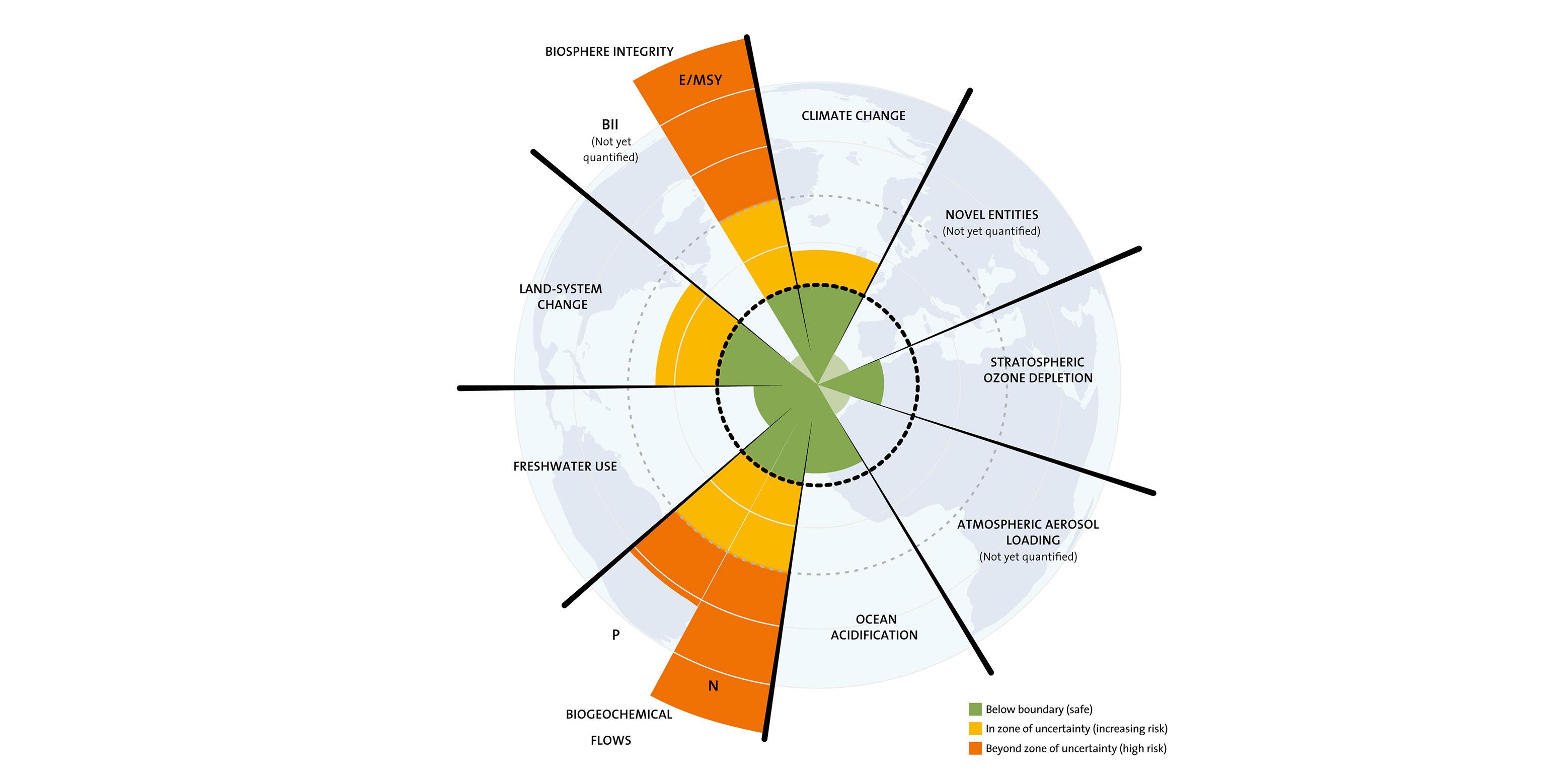In a world where environmental consciousness is becoming increasingly imperative, the concept of planetary boundaries stands as a crucial framework for guiding corporate sustainability efforts. By understanding and respecting the ecological foundations that support life on our planet, businesses can play a pivotal role in safeguarding the delicate balance of our Earth’s ecosystems. Join us on a journey through the intersection of planetary boundaries and corporate responsibility as we explore the innovative ways in which organizations can contribute to a more sustainable future for all.
Table of Contents
- Understanding Planetary Boundaries in Corporate Sustainability
- Building Ecological Foundations for Long-Term Business Resilience
- Strategic Recommendations for Aligning Corporate Practices with Planetary Limits
- Integrating Planetary Boundary Framework into Corporate Sustainability Strategies
- Q&A
- To Conclude

Understanding Planetary Boundaries in Corporate Sustainability
The concept of planetary boundaries not only shapes environmental discourse but also serves as a pivotal framework for understanding the delicate balance between human activities and the Earth’s ecosystems. By acknowledging these boundaries, businesses can adopt sustainable practices that align with ecological principles to ensure long-term viability. Incorporating these ecological foundations into corporate sustainability strategies is not just a choice but a necessity in safeguarding our planet’s health for future generations.
Embracing the planetary boundaries framework requires a fundamental shift in corporate mindset and operations. Companies need to integrate practices that respect the limits of the Earth’s systems and promote regeneration rather than depletion. From reducing carbon emissions to minimizing resource exploitation, each action contributes to mitigating environmental impacts and moving towards a more sustainable future. By prioritizing these boundaries, businesses can drive innovation, foster resilience, and contribute to a healthier planet for all living beings.
| Planetary Boundary | Actions for Corporate Sustainability |
|---|---|
| Biodiversity Loss | Implement conservation strategies, support ecosystem restoration projects |
| Climate Change | Transition to renewable energy sources, reduce greenhouse gas emissions |
| Freshwater Use | Optimize water usage, invest in water-efficient technologies |
Building Ecological Foundations for Long-Term Business Resilience
In today’s rapidly changing business landscape, prioritizing ecological sustainability has become paramount for ensuring long-term resilience and success. By embracing the concept of planetary boundaries, companies can lay down solid ecological foundations that not only benefit the environment but also contribute to their own sustainability goals.
Key considerations for building ecological foundations include:
- Understanding the interconnectedness of ecosystems and business operations
- Embracing sustainable practices that align with planetary boundaries
- Investing in renewable energy sources to reduce carbon footprint
- Engaging with stakeholders to drive collective action towards environmental stewardship
Moreover, creating a corporate sustainability framework based on planetary boundaries entails:
Setting clear goals and metrics to track environmental impact
Implementing circular economy principles to minimize waste generation
Adopting green procurement strategies to support eco-friendly suppliers
Fostering a culture of innovation and continuous improvement towards sustainability goals

Strategic Recommendations for Aligning Corporate Practices with Planetary Limits
Exploring the delicate balance between corporate practices and the planet’s ecological limits unveils a crucial journey towards sustainable business operations. Embracing a mindset of responsibility and innovation can pave the path for organizations to thrive while respecting the boundaries set by our environment. Adapting strategies that prioritize harmony with nature not only fosters environmental stewardship but also contributes to long-term resilience and success.
Key Recommendations 1. Embrace circular economy principles. 2. Implement sustainable supply chain practices. 3. Invest in renewable energy sources.
By aligning corporate strategies with planetary boundaries, businesses can foster a culture of environmental mindfulness that resonates throughout their operations. Rethinking production processes, reducing waste generation, and supporting biodiversity conservation initiatives can all contribute to a more sustainable future. As companies navigate the complex landscape of environmental challenges, integrating these strategic recommendations can serve as a compass towards responsible corporate practices that honor and safeguard our planet.

Integrating Planetary Boundary Framework into Corporate Sustainability Strategies
In today’s rapidly evolving business landscape, the concept of integrating the Planetary Boundary Framework into corporate sustainability strategies is gaining momentum. Businesses are recognizing the critical need to align their operational practices with ecological foundations to ensure long-term viability and resilience. By acknowledging and respecting the planetary boundaries set forth by science, companies can proactively address environmental risks, enhance their reputation, and contribute positively to global sustainability efforts.
One key aspect of incorporating the Planetary Boundary Framework into corporate sustainability strategies is the development of robust environmental policies that prioritize biodiversity conservation, carbon footprint reduction, and resource efficiency. Companies can take proactive steps such as investing in renewable energy sources, implementing circular economy principles, and engaging in sustainable sourcing practices to minimize negative impacts on the environment. By leveraging innovative technologies and collaborating with stakeholders, organizations can navigate the complex interplay between business activities and ecological boundaries, fostering a harmonious relationship with the planet for generations to come.
| Advantages of Planetary Boundary Integration: |
|---|
| 1. Enhanced environmental performance. |
| 2. Improved stakeholder trust and loyalty. |
| 3. Long-term business resilience. |
Q&A
Q: What are planetary boundaries and how do they relate to corporate sustainability?
A: Planetary boundaries refer to the limits within which humanity can safely operate to maintain Earth’s stability and support life as we know it. These boundaries encompass various environmental indicators such as climate change, biodiversity loss, and freshwater use. When corporations align their sustainability efforts with these boundaries, they contribute to safeguarding the planet for future generations.
Q: Why is it essential for businesses to respect planetary boundaries in their operations?
A: Respecting planetary boundaries is crucial for businesses as it ensures the long-term viability of their operations. By staying within these limits, companies can minimize their environmental impact, reduce risks associated with resource depletion and climate change, and enhance their reputation as responsible corporate citizens.
Q: How can businesses integrate the concept of planetary boundaries into their sustainability strategies?
A: Businesses can integrate the concept of planetary boundaries into their sustainability strategies by setting science-based targets that align with these boundaries. This involves assessing the environmental impact of their operations, reducing resource consumption, promoting biodiversity conservation, and investing in renewable energy solutions. By incorporating planetary boundaries into their decision-making processes, companies can drive innovation, create shared value, and contribute to a more sustainable future.
Q: What role do stakeholders play in holding businesses accountable for respecting planetary boundaries?
A: Stakeholders, including customers, investors, employees, and communities, play a vital role in holding businesses accountable for respecting planetary boundaries. By demanding transparency, ethical practices, and sustainable initiatives, stakeholders can influence corporate behavior and encourage companies to prioritize environmental stewardship. Collaboration between businesses and stakeholders is essential for achieving a harmonious balance between economic prosperity and planetary well-being.
To Conclude
As we navigate the intricate terrain of corporate sustainability and the vital concept of planetary boundaries, it becomes abundantly clear that our actions today profoundly impact the world we leave for future generations. By embracing the ecological foundations outlined within these planetary boundaries, businesses have the opportunity to not only thrive economically but also to be stewards of a healthier, more sustainable planet. Let us continue to push the boundaries of innovation and responsibility, creating a brighter and more sustainable tomorrow for all living beings on this extraordinary planet we call home. Together, we can build a future where balance and harmony with nature are not just ideals, but the guiding principles of our collective journey towards a more sustainable and prosperous world.




0 Comments